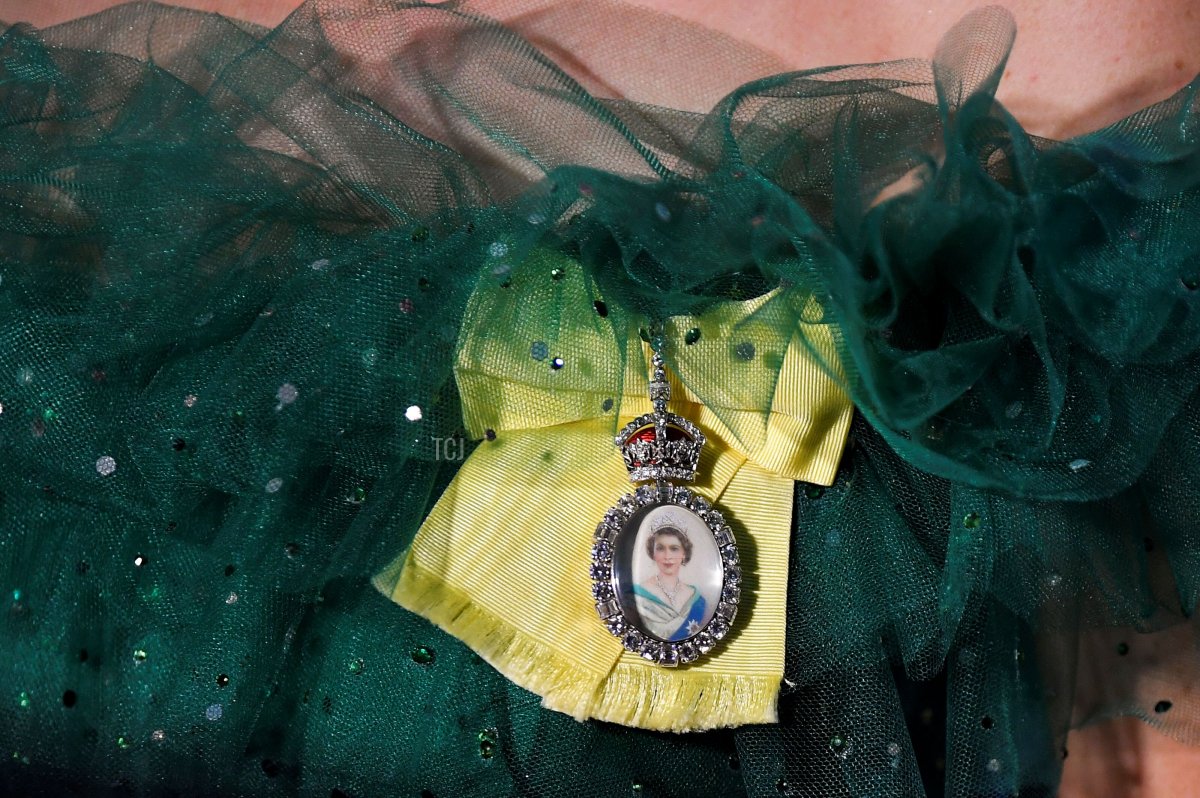
I’ve gotten lots of questions recently about a certain decoration worn by the ladies of the House of Windsor: the little miniature portraits, surrounded by gemstones, that hang from colorful ribbons. So today, let’s look a little more closely at the Royal Family Orders worn by the British royals, shall we?
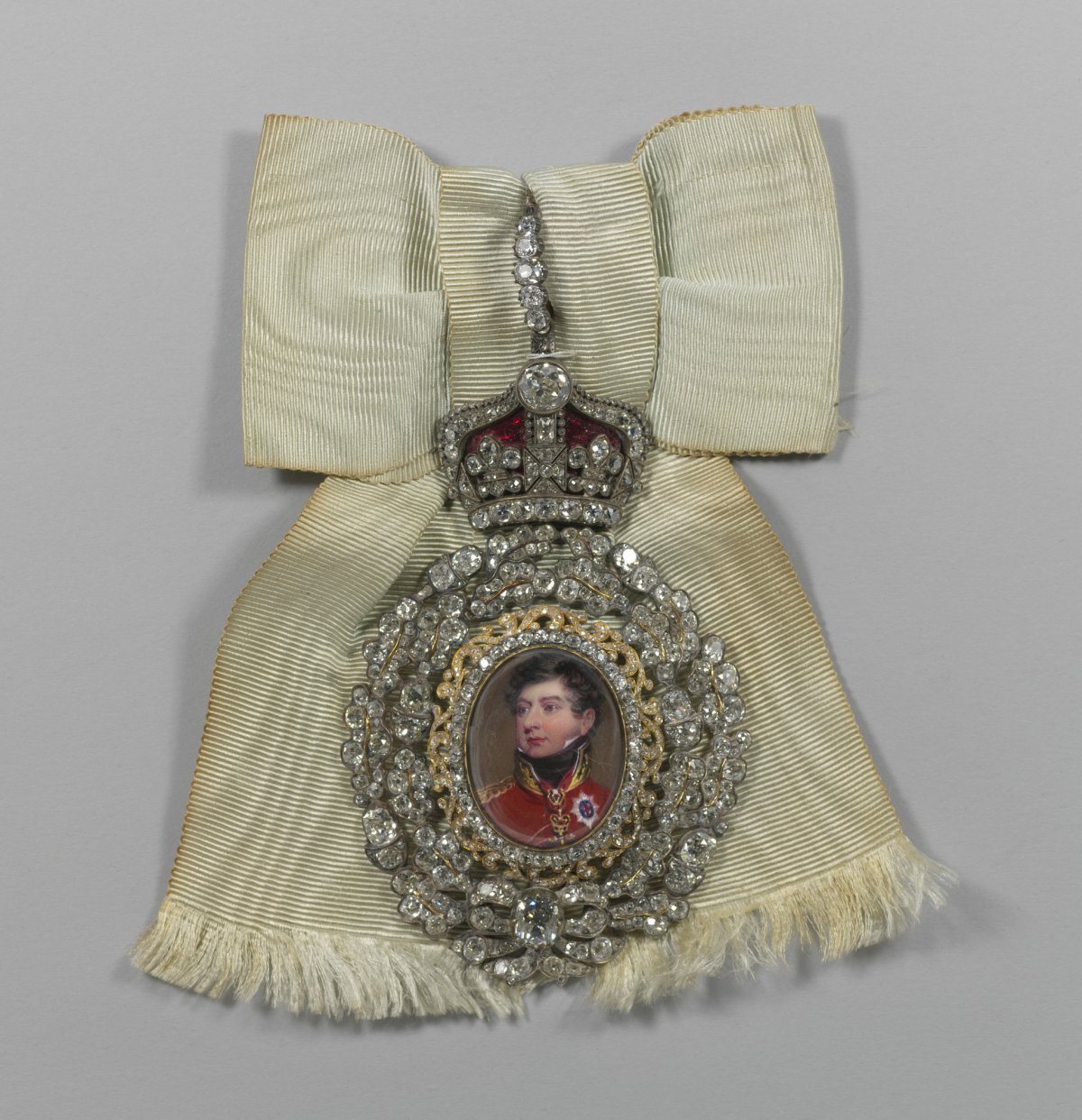
The first Royal Family Order instituted by a member of the British royal family was that of King George IV. Women of the family had worn miniature portraits of the monarch prior to the establishment of the order, but George standardized the practice. The miniature portrait on the badge of the order, painted by Henry Bone, is based on a famous painting of the king by Sir Thomas Lawrence. The portrait, surrounded by jewels and topped by a crown, hangs from an ivory-colored ribbon. The honor was only bestowed on female members of the royal family.
This particular badge, held in the Royal Collection, was bestowed by King George IV on his sister, Queen Charlotte of Württemberg (1756-1828). When she died, she bequeathed the badge and ribbon to her niece, the young Princess Victoria of Kent. She, of course, later became Queen Victoria, and she left the badge to the crown collection on her death.
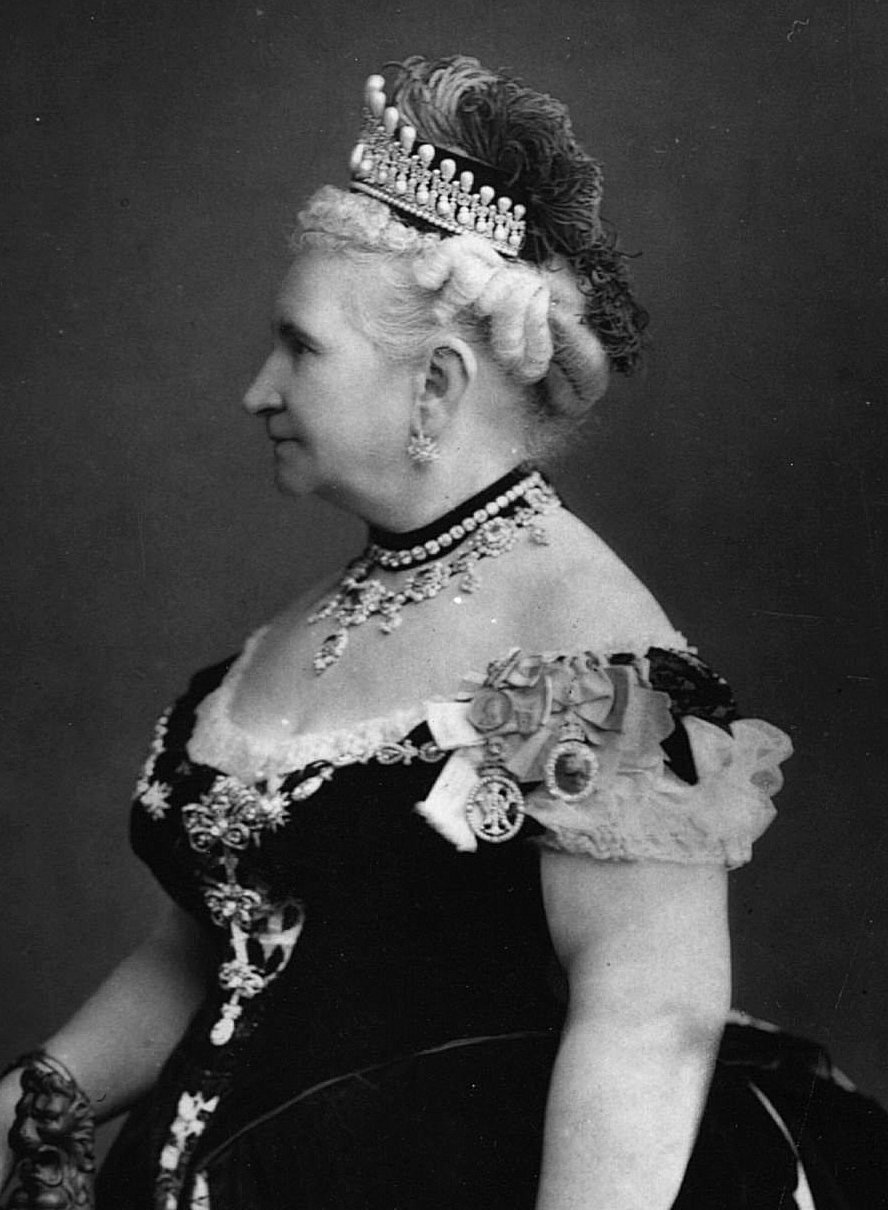
Probably the longest-lived wearer of King George IV’s Royal Family Order was another niece, Grand Duchess Augusta of Mecklenburg-Strelitz. She’s pictured here wearing the order (with other badges, including the Order of the Crown of India) in a portrait taken at the time of the coronation of King Edward VII in 1902. (She’s also wearing a very familiar jewel: the original Cambridge Lover’s Knot Tiara, which was later copied for her niece, Queen Mary.)
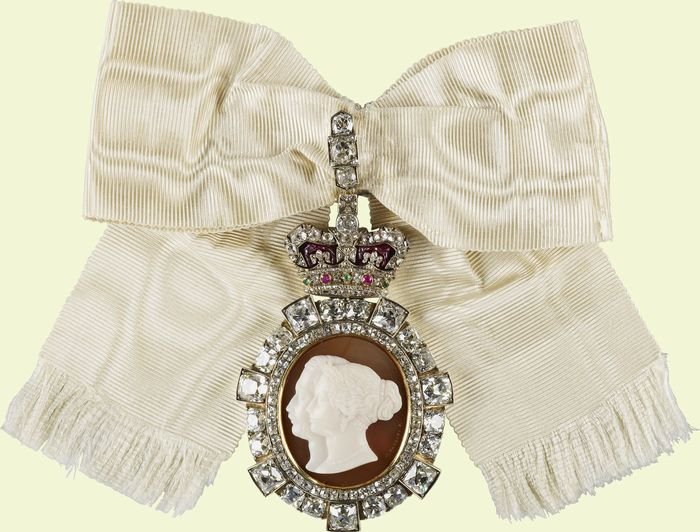
King William IV didn’t get around to issuing a Royal Family Order during his reign, but Queen Victoria did, putting her own spin on the honor. She created the Royal Order of Victoria and Albert in 1862, after the death of the late Prince Consort, issuing it to female members of the family and to some female courtiers. (There were multiple classes of the order.) Instead of a miniature portrait, the badge of the order featured a dual cameo silhouette portrait (made in Rome by Tommaso Saulini) of Victoria and Albert. Like the George IV order, the badge was encrusted with jewels, topped by a crown, and suspended from an ivory-colored ribbon.
This particular badge and ribbon belonged to Victoria and Albert’s third daughter, Princess Helena. It was returned to her nephew, King George V, on her death in 1923.
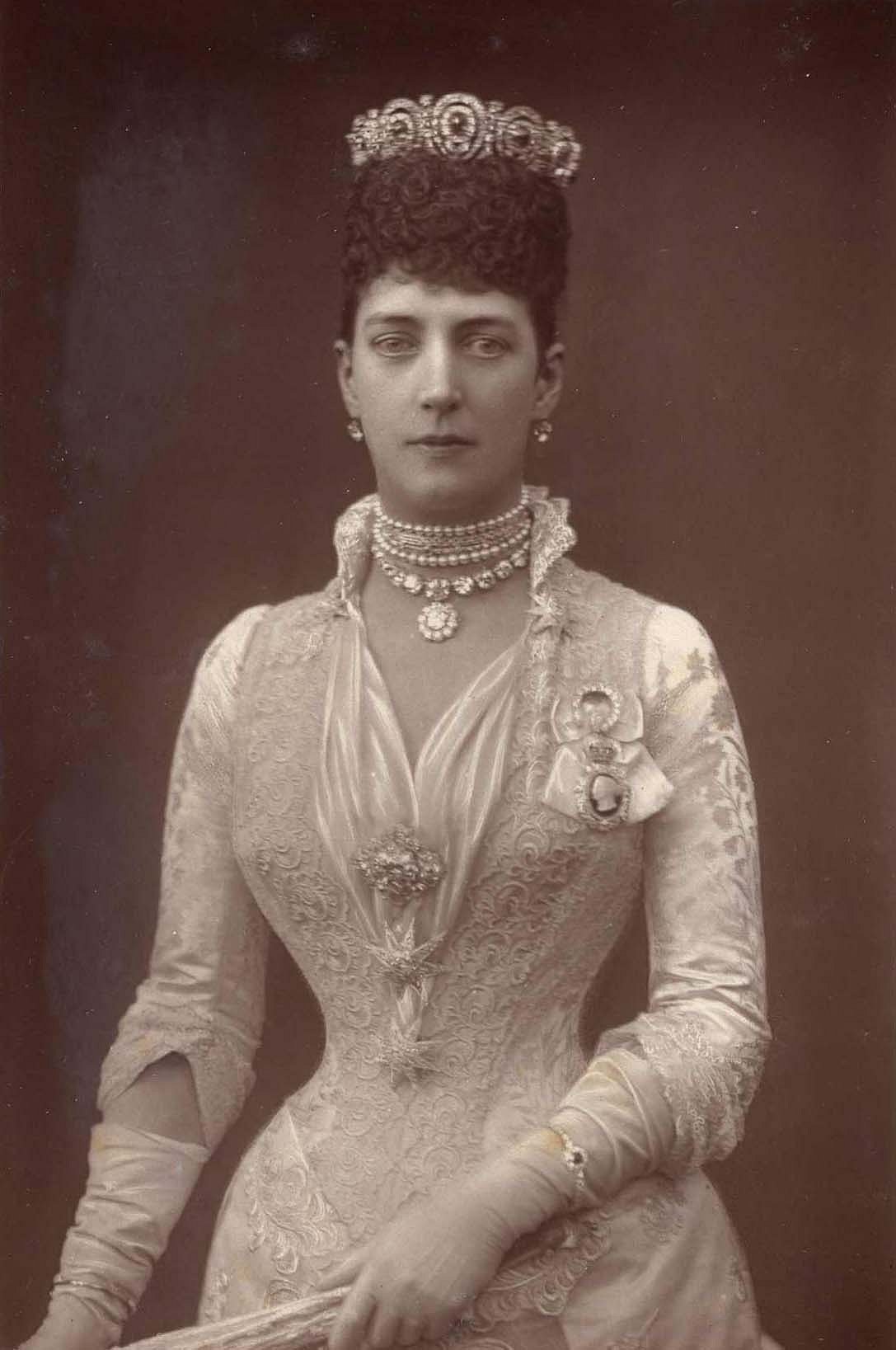
Here’s Queen Alexandra, then Princess of Wales, wearing the Royal Order of Victoria and Albert in a formal portrait taken at the wedding of her daughter, Princess Louise, in 1889. She’s pinned another brooch, a diamond horseshoe, to the order’s ribbon as well. Her tiara is a convertible diamond diadem worn with sapphires given to her by her brother-in-law, Emperor Alexander III of Russia, as a silver wedding anniversary present in 1887. The tiara, which could also be worn in an amethyst setting, was later bequeathed to Louise and sold by her descendants.
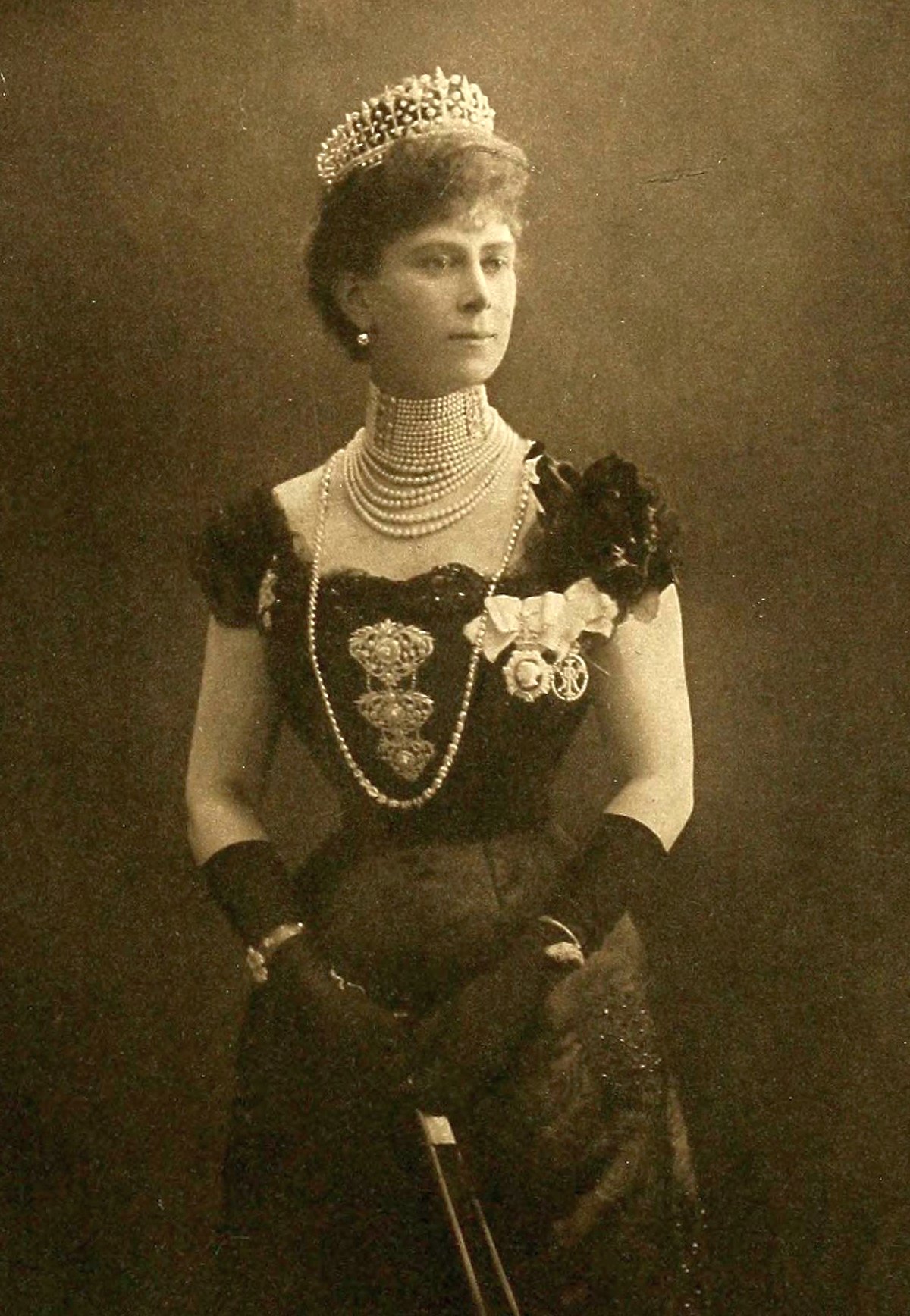
In this portrait, Queen Mary (then the Duchess of Cornwall and York) wears the Royal Order of Victoria and Albert (and the Order of the Crown of India) while in mourning for Queen Victoria in 1901. Her other jewels include the County of Surrey Tiara (which was later dismantled, with the diamonds used to make the Honeysuckle Tiara and to supplement the Girls of Great Britain & Ireland Tiara), her eleven-row pearl choker necklace (now with the Gloucesters), and the Karpurthala Stomacher (which was later redesigned and given to Queen Elizabeth II).
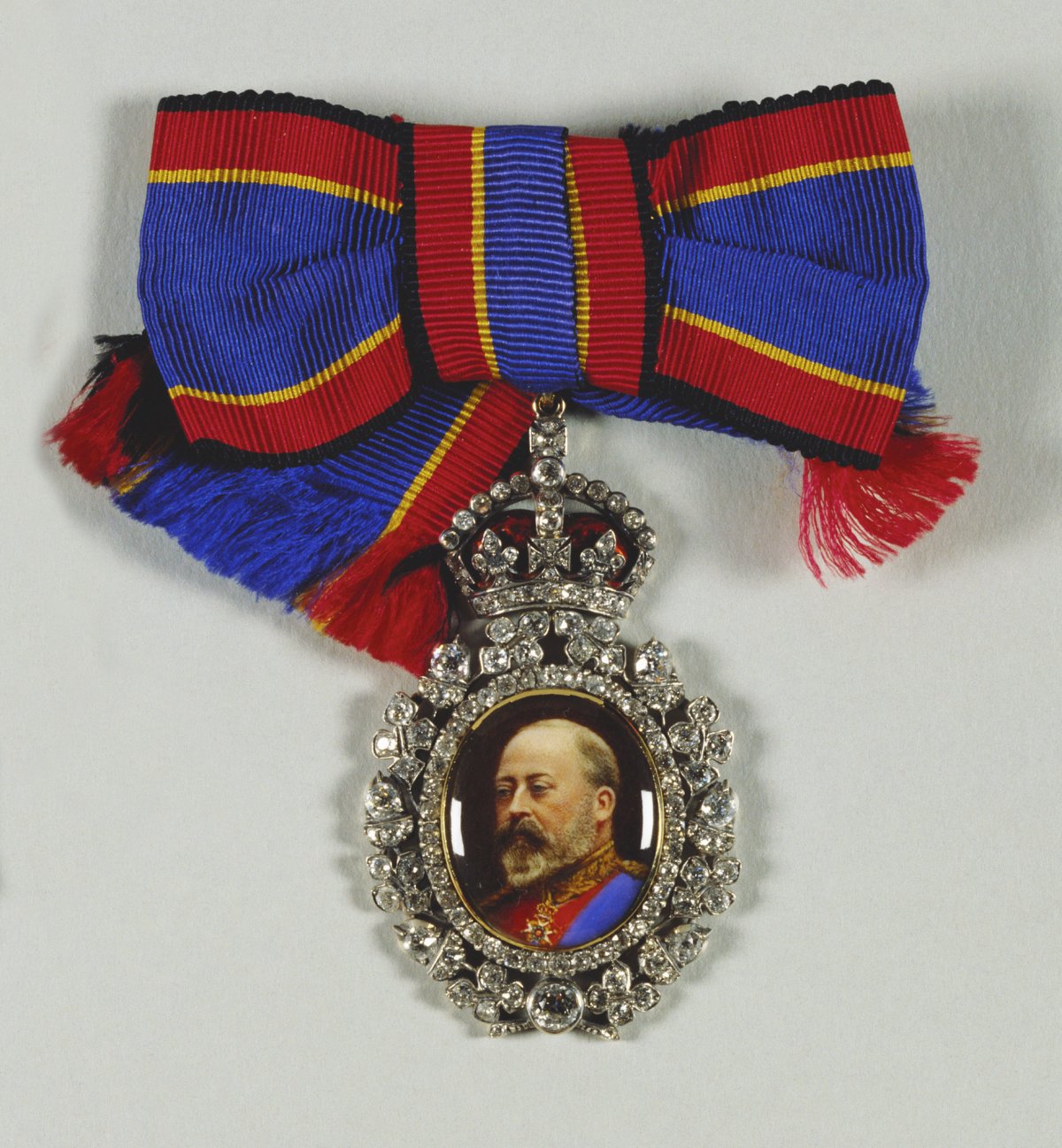
Queen Victoria’s son, King Edward VII, instituted his own Royal Family Order during his reign (1901-1910). It was once again bestowed on female members of the royal family. The portrait of the monarch is attributed to Robert Henderson, a miniaturist who worked for Dickinson & Foster. The portrait is surrounded by gemstones and topped with a gem-encrusted crown. The badge hangs from a red and blue striped ribbon with yellow accents. (The colors of the ribbon are very similar to the king’s racing colors.)
This particular badge, now part of the Royal Collection, belonged to the monarch’s second daughter, Princess Victoria.
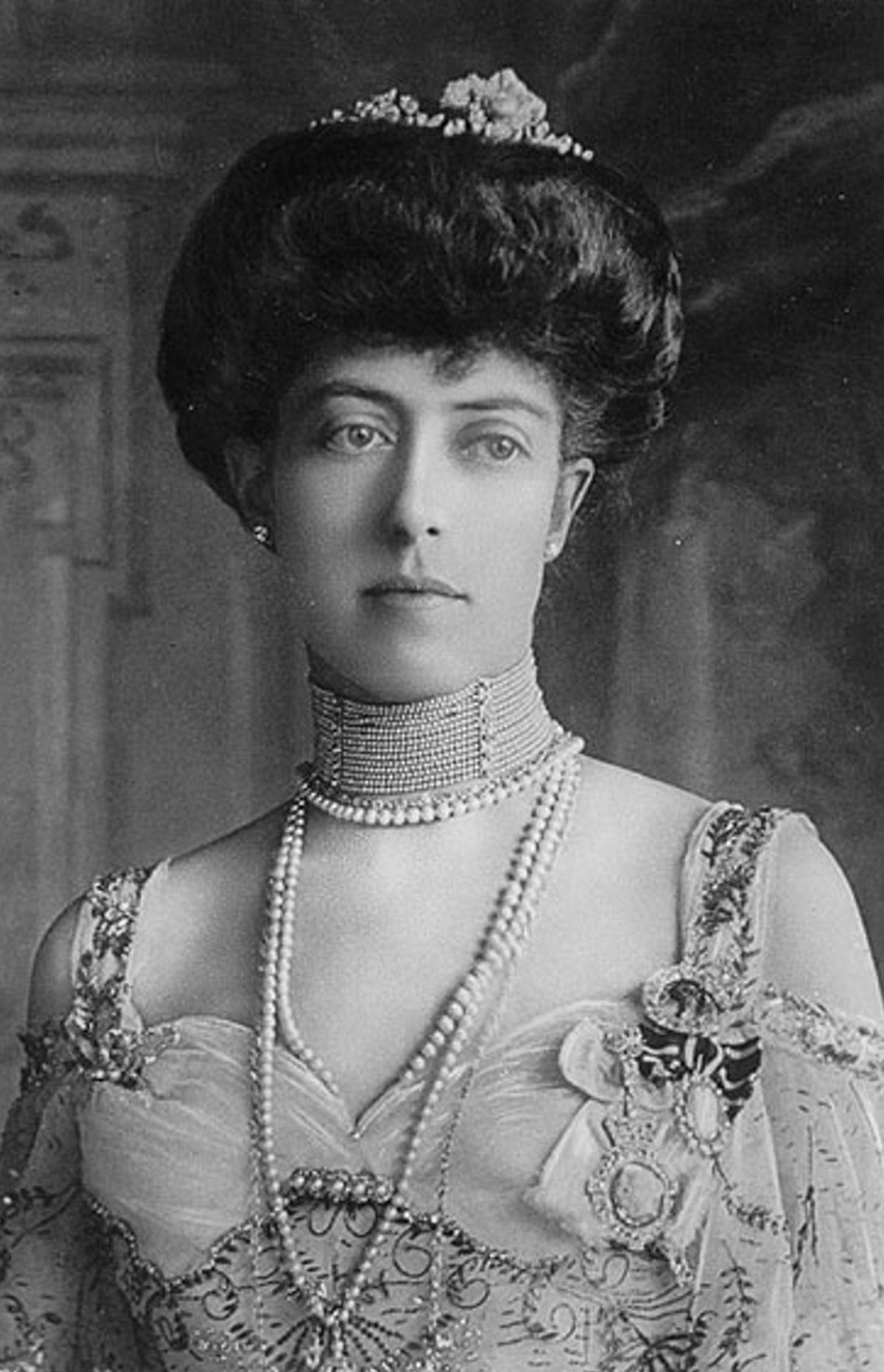
And here’s Princess Victoria wearing her father’s Royal Family Order (as well as the Royal Order of Victoria and Albert) at the wedding of Princess Margaret of Connaught and Prince Gustaf Adolf of Sweden at St. George’s Chapel, Windsor in June 1905. She’s also wearing her own diamond floral tiara, and like her mother before her, she has pinned a diamond horseshoe brooch near her order badges and ribbons.
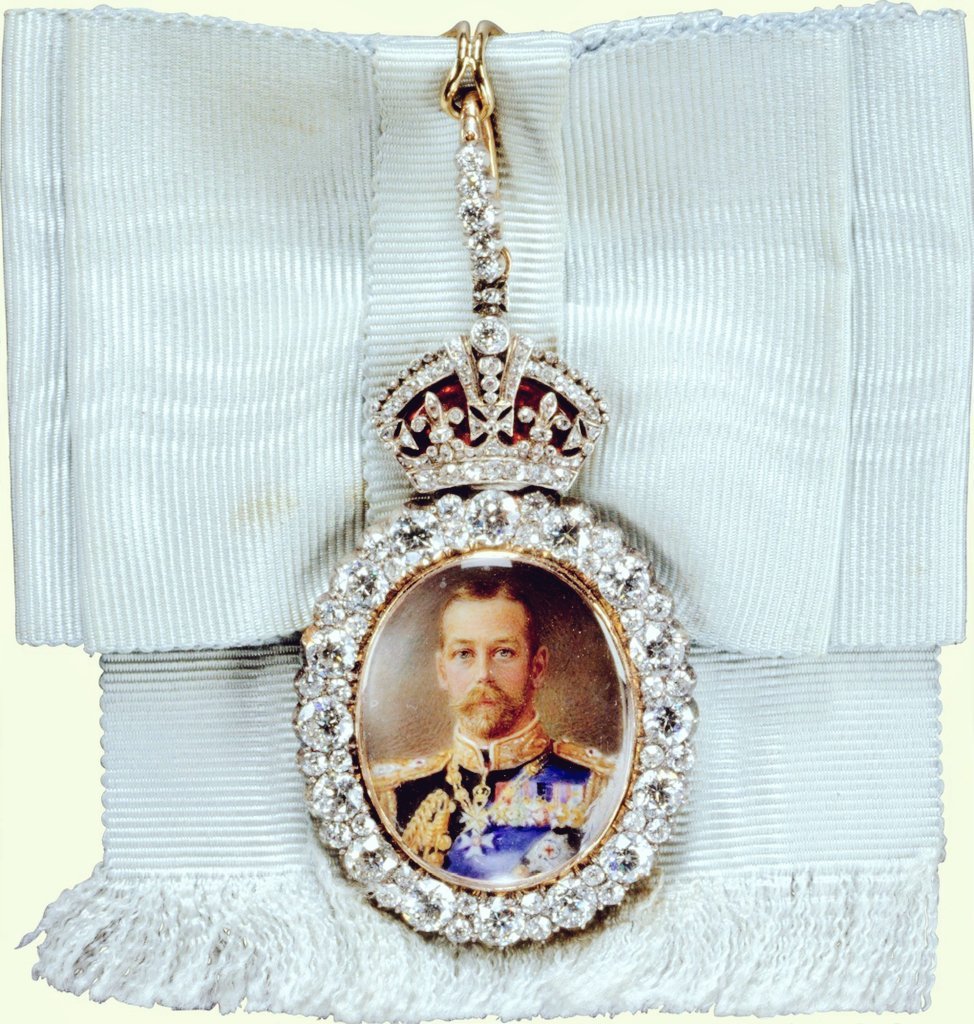
By now, the creation of a Royal Family Order was a regular part of the accession of a new monarch. King George V’s Royal Family Order, suspended from a pale blue ribbon, featured a miniature portrait of the monarch in his naval uniform.
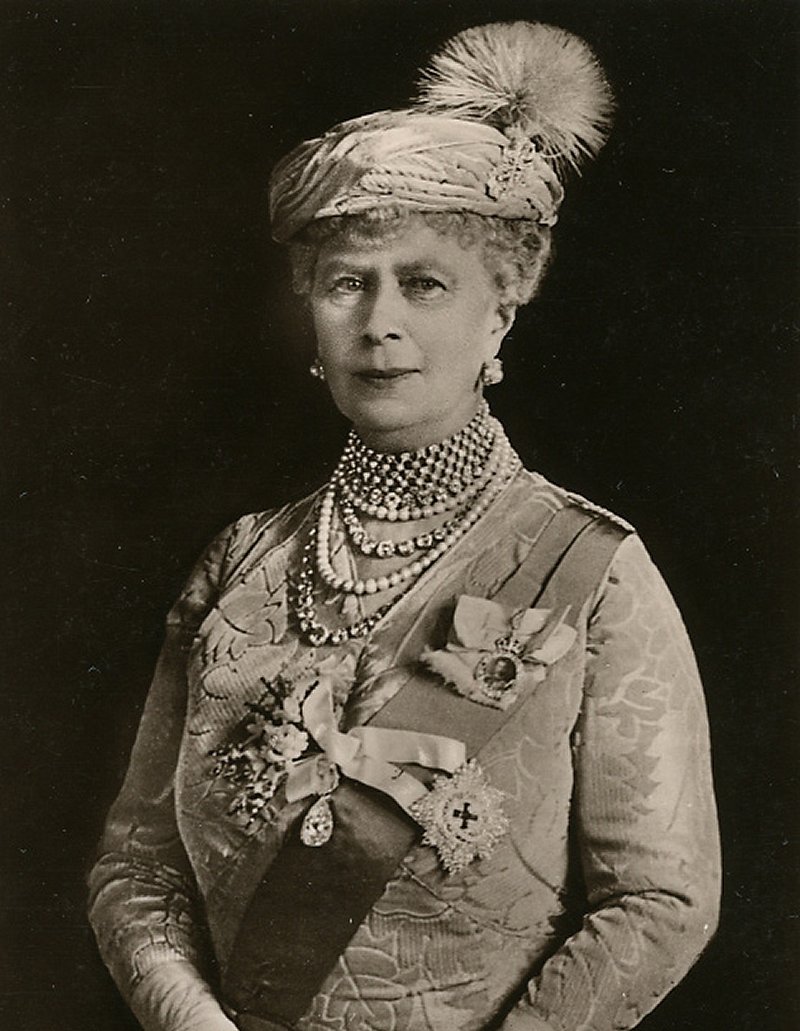
Here’s a photograph of Queen Mary wearing King George V’s Royal Family Order in her later years. (You’ll also spot the Cullinan III & IV Brooch peeking out from underneath her floral corsage.)
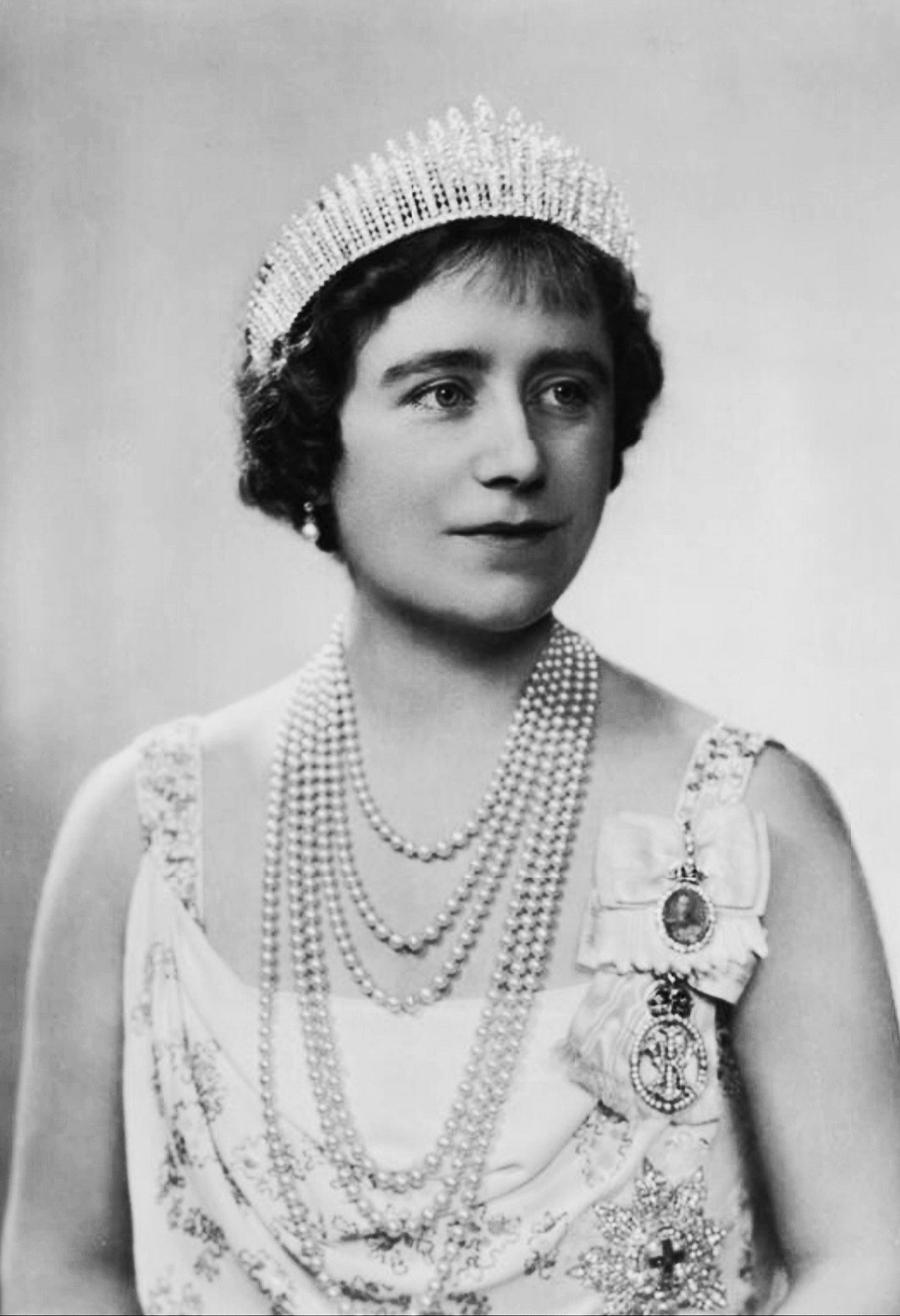
And here, in a portrait taken at the end of 1936, the new Queen Elizabeth wears her late father-in-law’s Royal Family Order (plus the Order of the Crown of India). She’s also wearing pearls and Queen Mary’s Diamond Fringe Tiara.
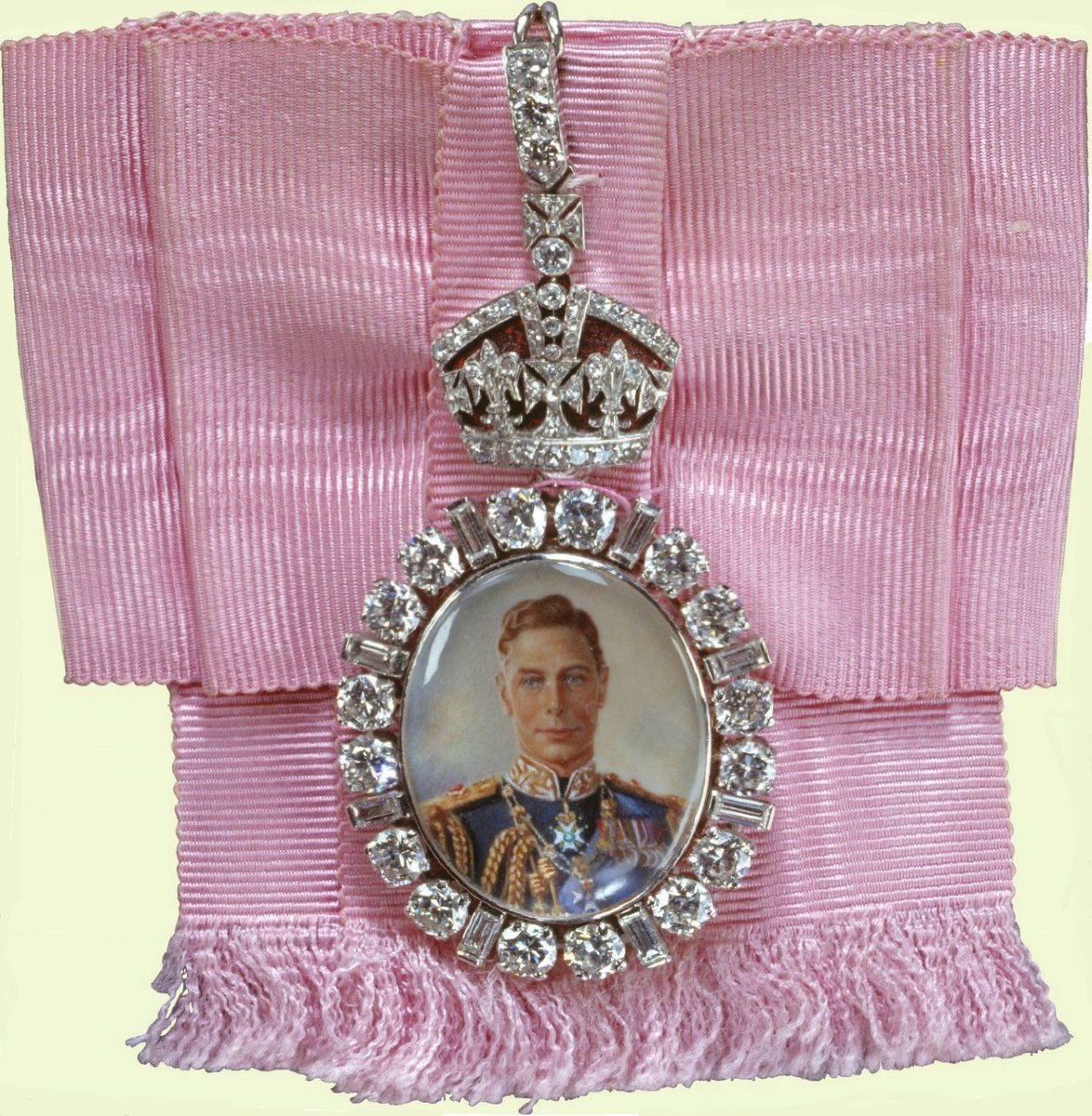
Elizabeth isn’t wearing King George VI’s Royal Family Order in that portrait above, because it hadn’t yet been made. His brother, Edward VIII, hadn’t had enough time to commission his own Royal Family Order, and Bertie’s took a bit to be made as well. He worked with Garrard on the design of the badge, which was suspended from a pale pink ribbon. It was distributed to several female members of the royal family in time for the coronation in May 1937.
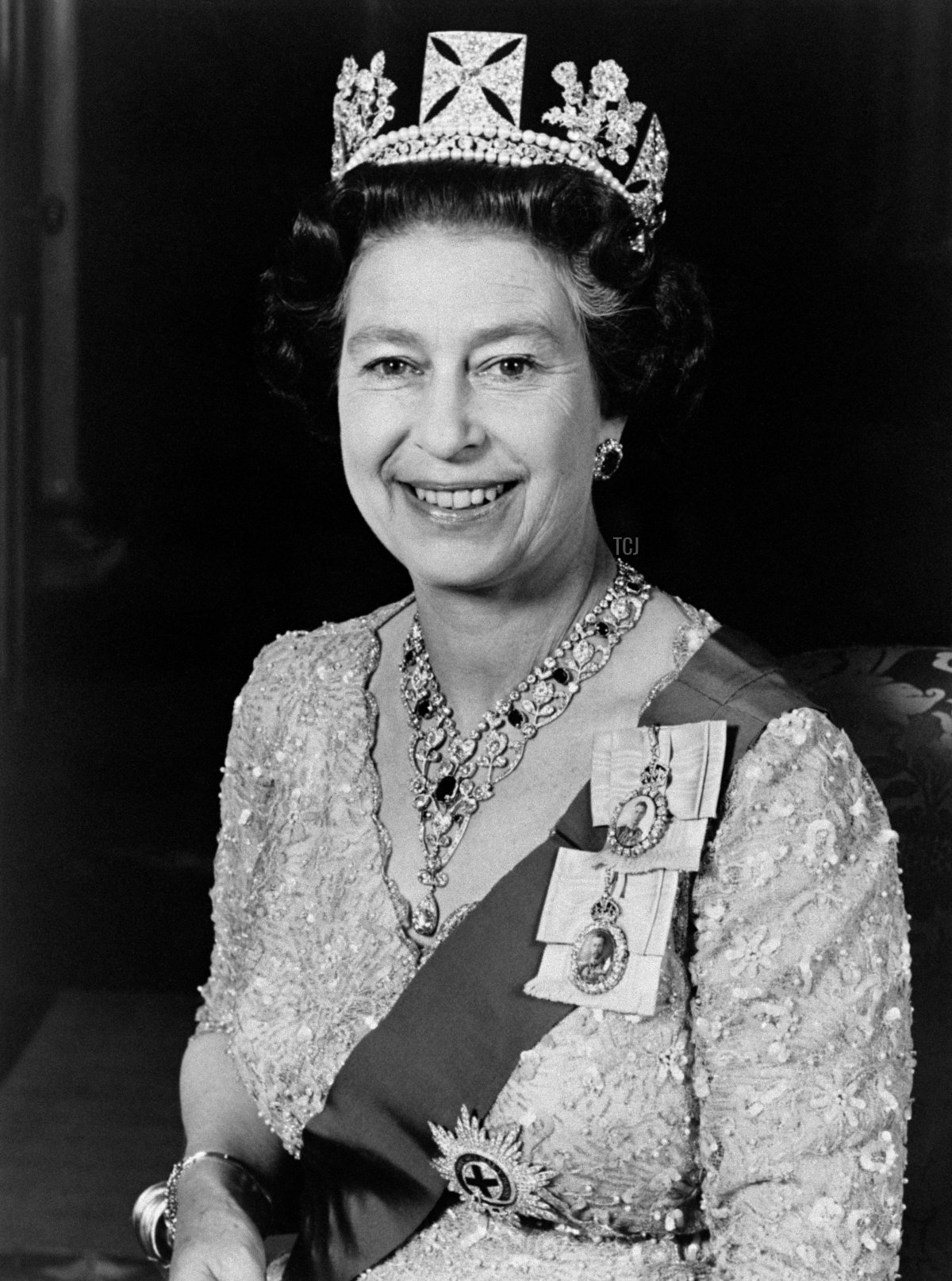
In this portrait, taken in 1987, Queen Elizabeth II wears both the Royal Family Orders of her father, King George VI, and her grandfather, King George V. Her other jewels include the Diamond Diadem and the Greville Ruby Necklace.
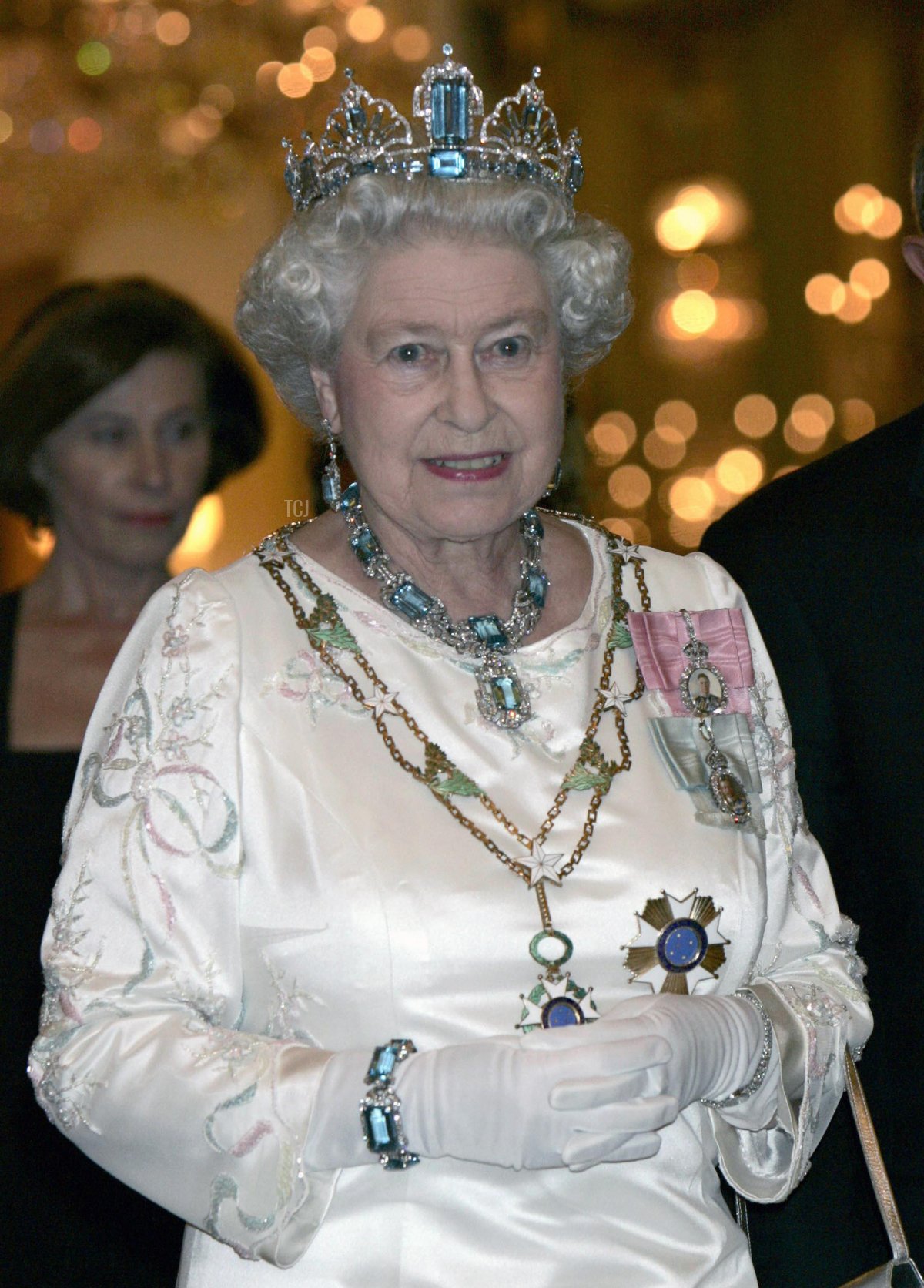
And here, she wears both Royal Family Orders with the Brazilian Aquamarines in March 2006. These kinds of orders are cumulative; you don’t have to stop wearing one just because you are given another. Queen Elizabeth II was the last living holder of George V’s Royal Family Order. Following her death a few weeks ago, that order will never be worn in public again. (There’s just one remaining wearer of George VI’s Royal Family Order: Princess Alexandra, the Hon. Lady Ogilvy.)
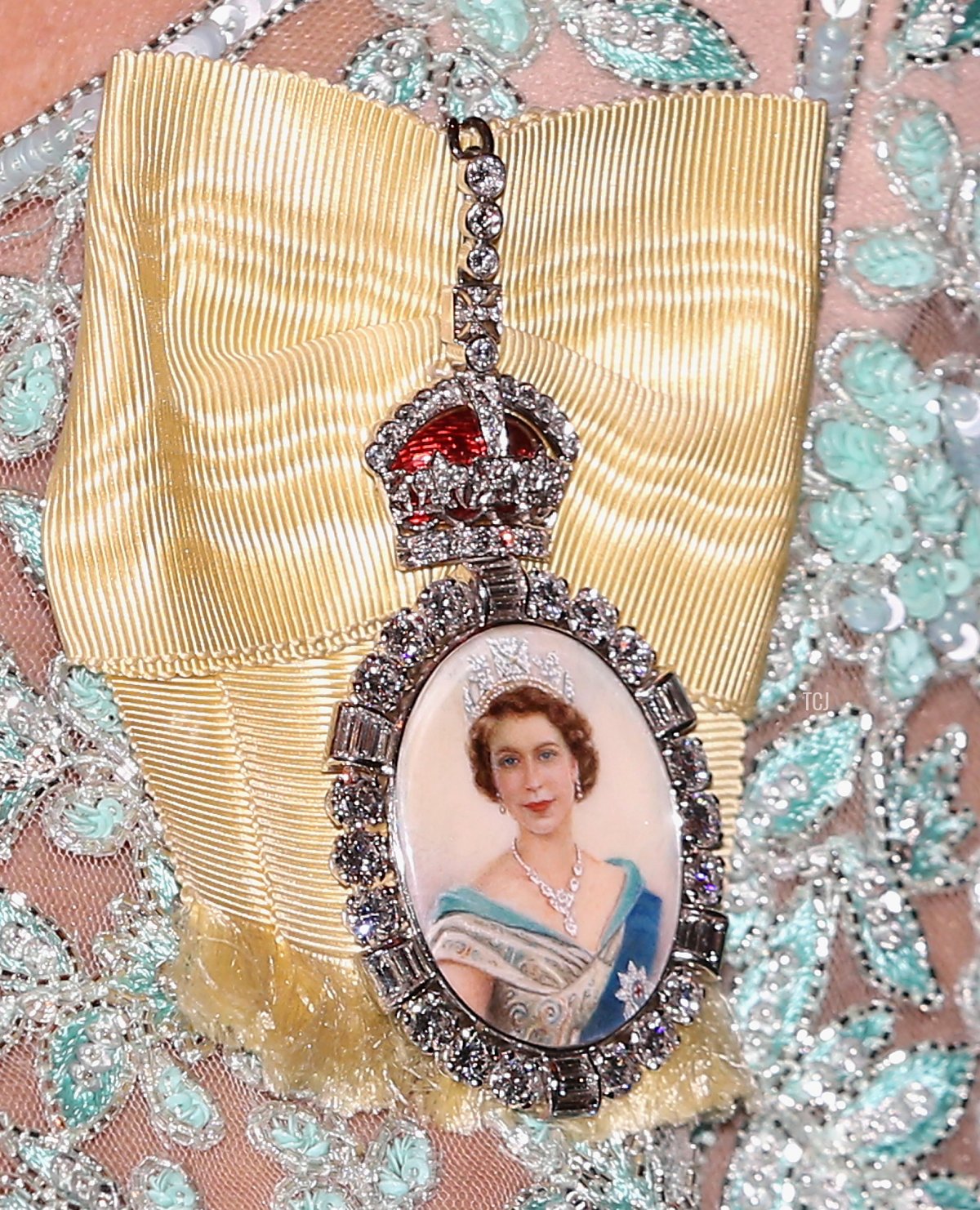
Queen Elizabeth II created her own Royal Family Order in the run-up to her coronation as well. The order features a miniature portrait of the monarch surrounded by diamonds. The portrait is topped by a jeweled crown and suspended from a pale yellow ribbon. The orders made before 2017 featured portraits hand-painted on ivory; since 2017, they have been painted on glass (reportedly at the request of the then-Duke of Cambridge). In the portrait, the young monarch wears the Diamond Diadem, the Bahrain Pearl Drop Earrings, and the Nizam of Hyderabad Necklace. The miniature is based on a Dorothy Wilding photograph taken of the new monarch in April 1952.
This order badge is the one bestowed in 2007 on the Duchess of Cornwall, now the Queen Consort. She wears it here during the Commonwealth Heads of Government Meeting in Sri Lanka in 2013.
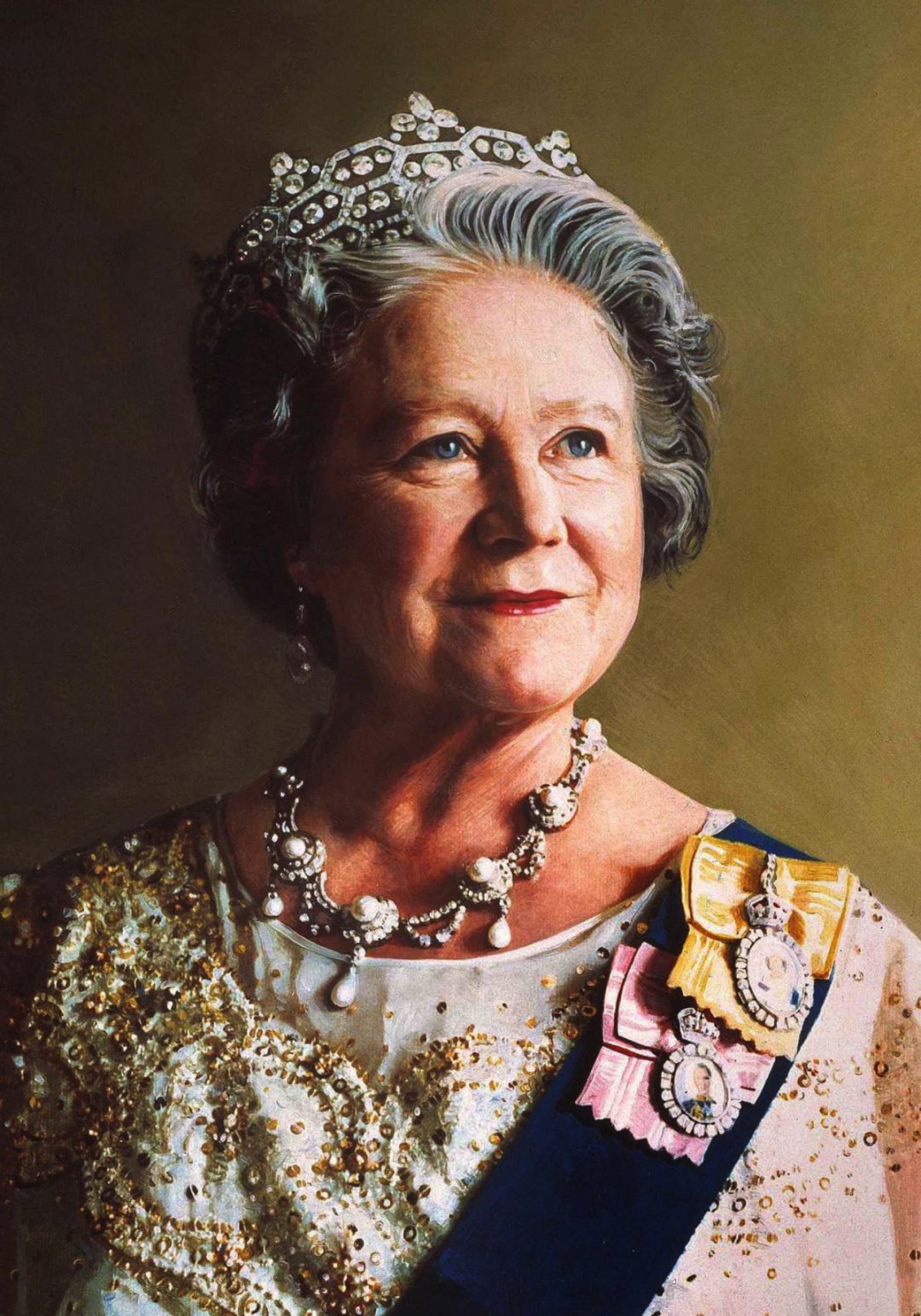
In this portrait of the Queen Mother, painted in 1986 by Richard Stone, she wears both the Royal Family Orders of George VI (her husband) and Elizabeth II (her daughter). As you saw above, she also had the Royal Family Order of George V, but later in life she generally wore just these two. In the portrait, she’s also wearing the Greville Tiara, the Greville Peardrop Earrings, and Queen Alexandra’s Wedding Necklace.
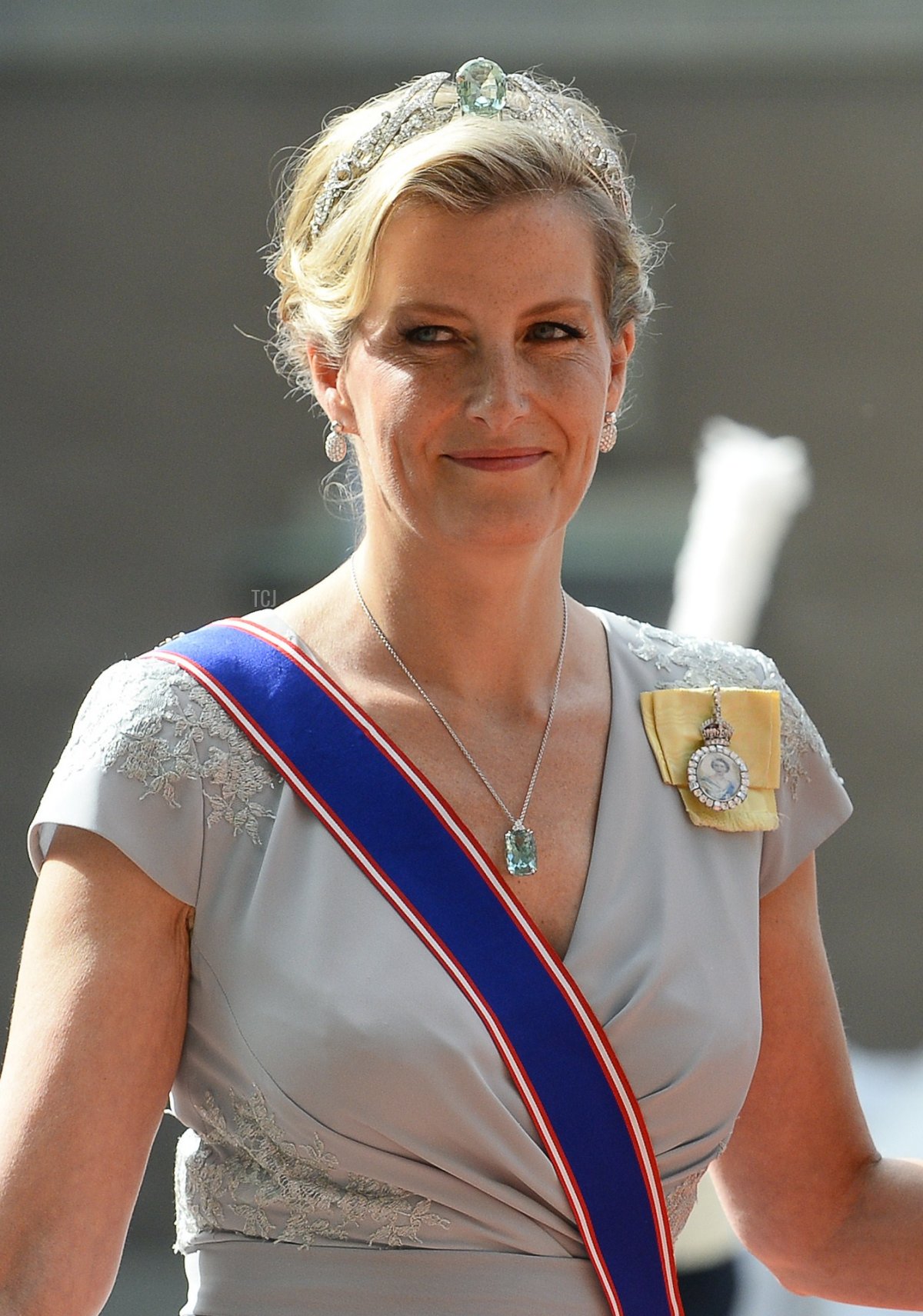
Here, the Countess of Wessex wears Queen Elizabeth II’s Royal Family Order (and the Wessex Aquamarine Necklace Tiara) for the wedding of Prince Carl Philip and Princess Sofia of Sweden in 2015.
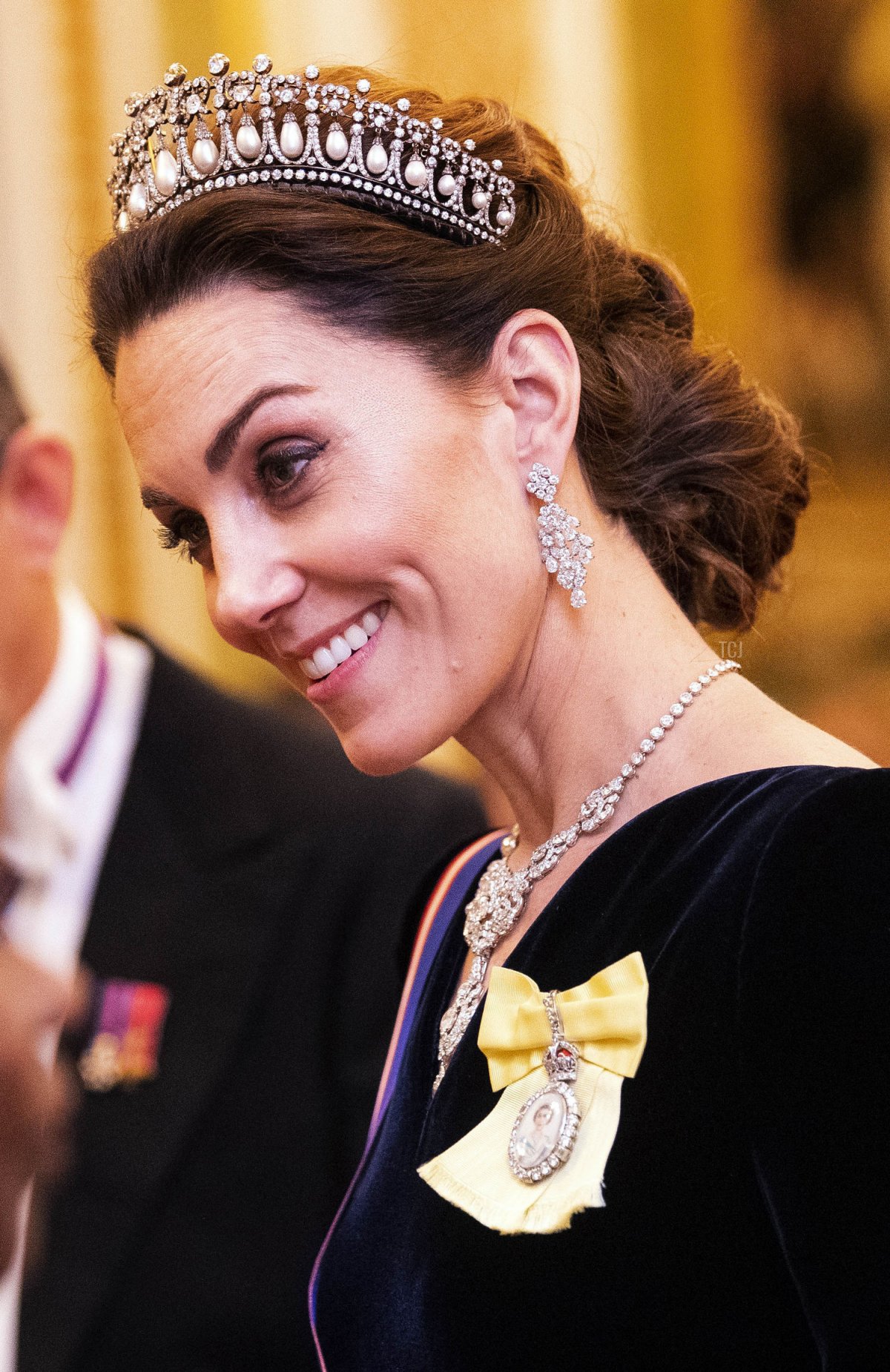
And here, at the Diplomatic Reception in December 2019, the Duchess of Cambridge (now the Princess of Wales) wears Queen Elizabeth II’s Royal Family Order pinned to her evening gown. Interestingly, she’s wearing the same necklace—the Nizam of Hyderabad Necklace—that the young Queen wears in the miniature portrait (as well as Queen Mary’s Lover’s Knot Tiara and the Queen’s Pear-Shaped Diamond Drop Cluster Earrings).
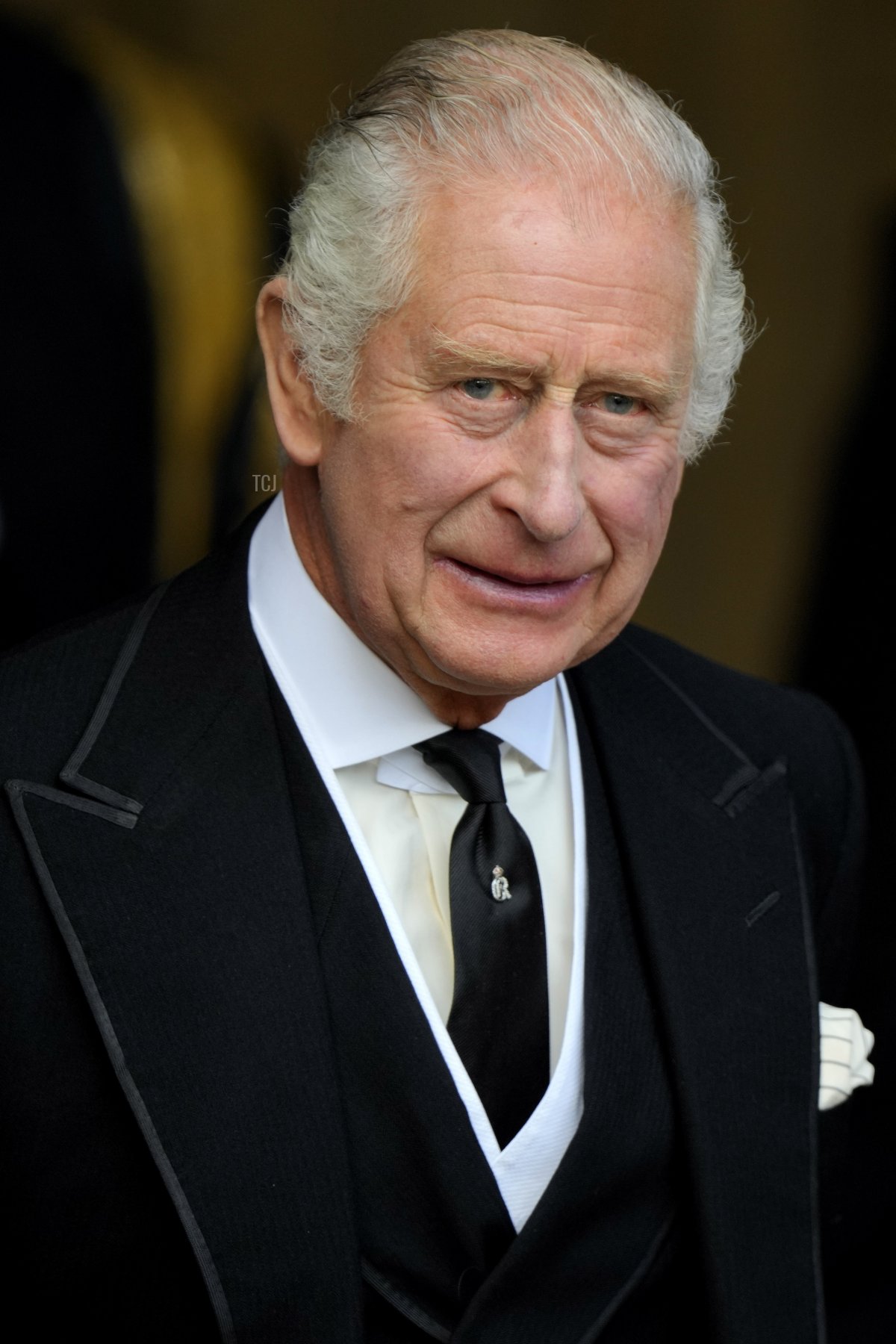
We’ve not yet heard any news about the possible designs for King Charles III’s Royal Family Order. (It’s VERY early for anything like that to have been seriously discussed!) But just for fun, let’s do some speculating. I think we can firmly state that the use of ivory in these miniature portraits is finished for good, and all the better, honestly. But what about the color of the ribbon? Perhaps pale green this time?
Leave a Reply
You must be logged in to post a comment.